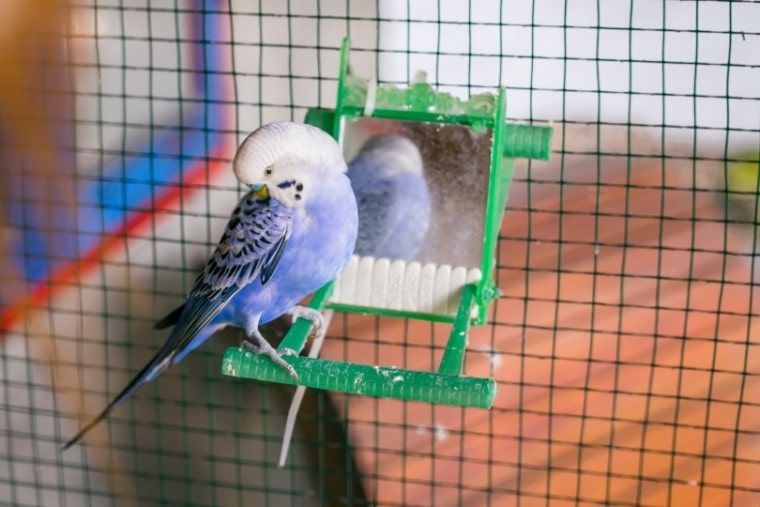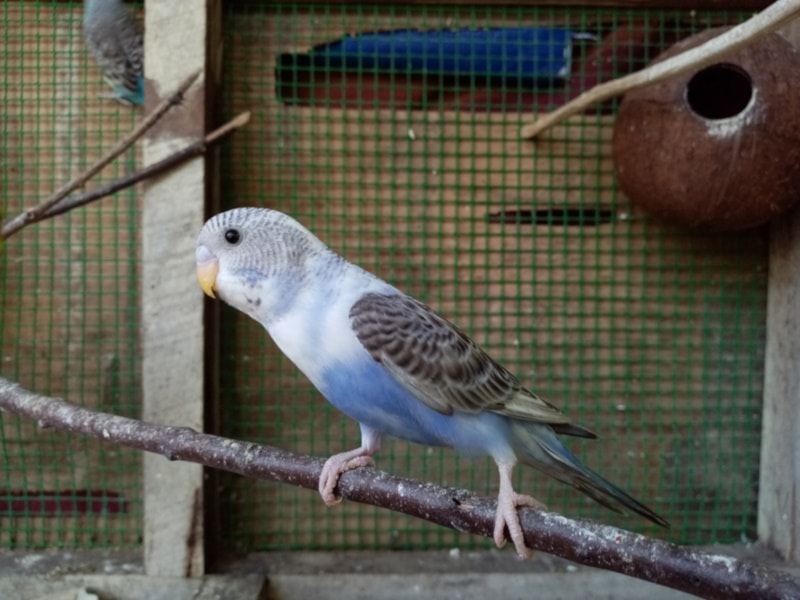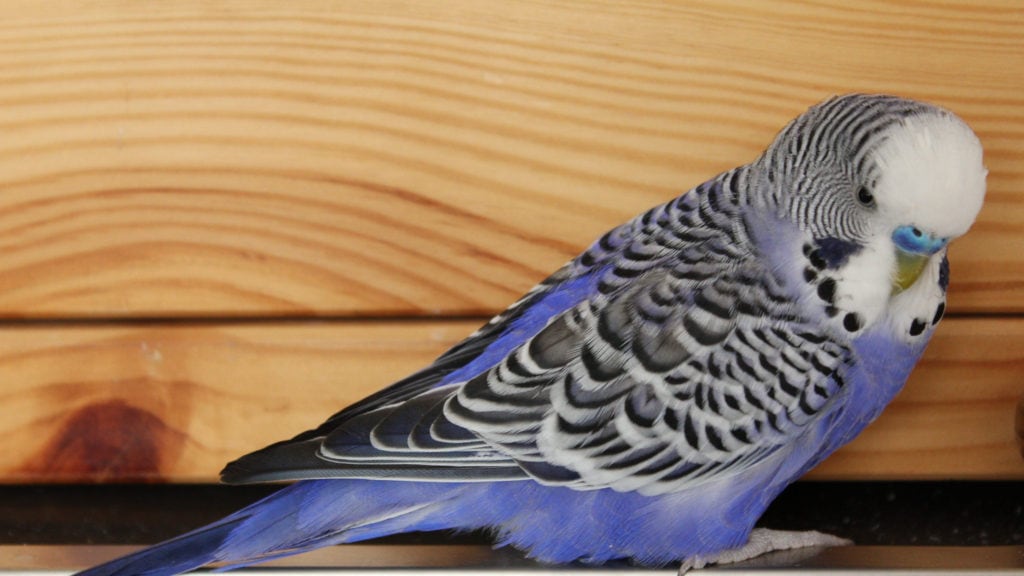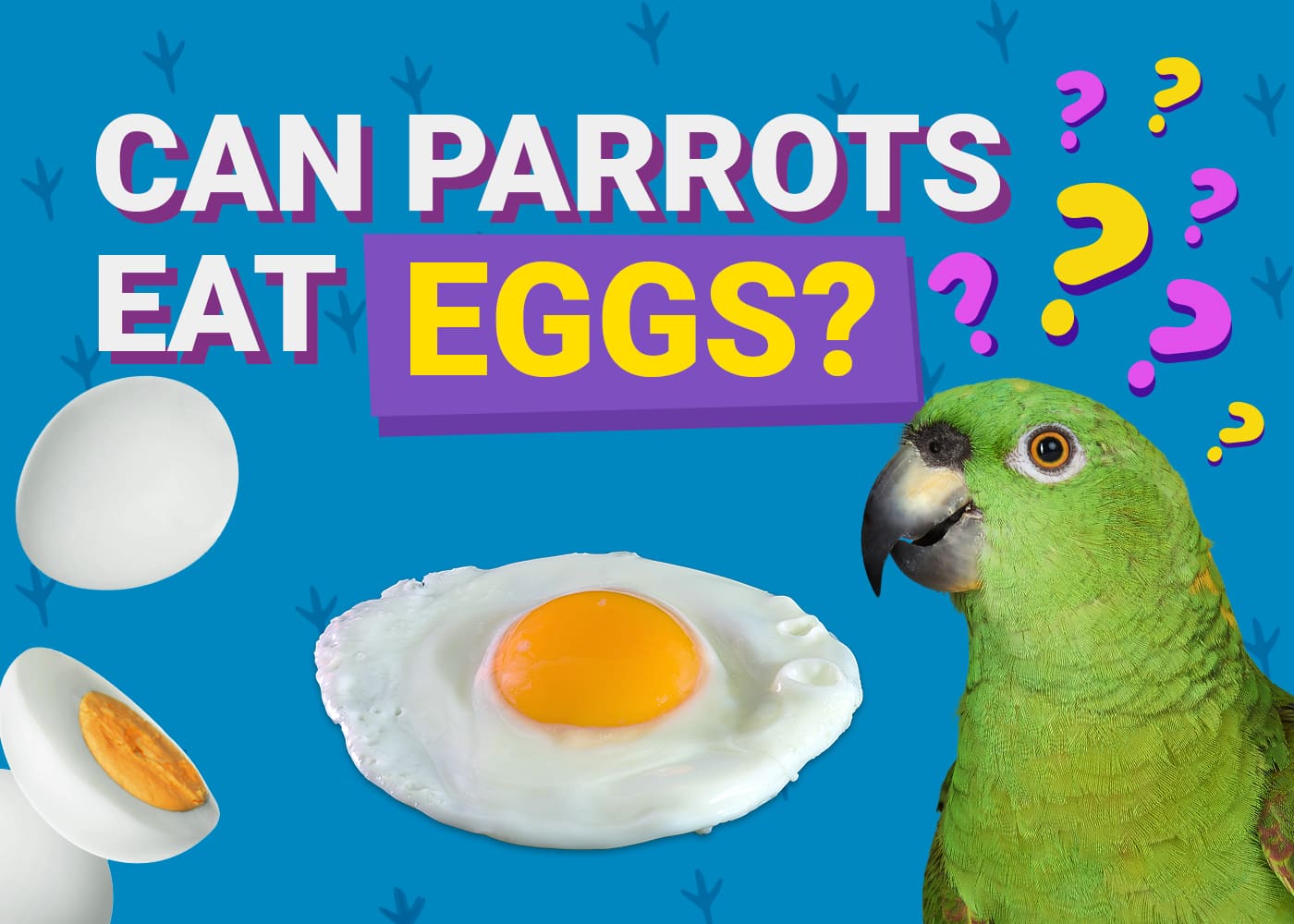
Parakeets comprise over 100 different species. However, when we talk about parakeets as pets, we’re generally referring to the budgerigar. This small species is a popular pet because of its friendly, social nature.
They love people, attention, and affection. Parakeet owners know that they’ll have a smart, chatty friend on hand with a parakeet. These little birds can learn many words and phrases. They are also known to whistle and chatter frequently.
The purple parakeet is a color mutation achieved through purposeful breeding. Certain genes are prioritized to produce specific color variations. Purple or violet budgerigars are quite rare and difficult to produce. The personality, temperament, and care of a purple parakeet are the same as for all other colors of these birds.
Species Overview
| Common Names: | Purple parakeet, budgerigar, budgie, shell parakeet |
| Scientific Name: | Melopsittacus undulatus |
| Adult Size: | 7 to 8 inches, 1 to 1.5 ounces |
| Life Expectancy: | 6 to 12 years |
Origin and History

The budgerigar is native to Australia. In the wild, these birds are generally green and yellow, or some variation of those two colors. They travel in large flocks searching for food and water.
They were first brought to Europe in the 1830s where they quickly became popular pets among the wealthy. By the late 1800s, Australia had banned their exportation as too many were being poached from the wild. There were enough budgerigars throughout Europe by this time that breeders were able to continue to produce enough birds for those who wanted them as pets.
Then, in the 1920s, budgerigars were brought to America for the first time. They grew in popularity as pets just as they had in Europe. The desire for specific color mutation of these birds also spread. Breeders began selecting for certain genes to produce birds with unique and interesting colors, such as purple.
Now, there are at least 30 different color mutations in budgerigars. The purple mutation was first bred in Australia in 1934. The first purple European budgerigar is mentioned in writing in 1935. It is unclear when they began to be bred in the United States, but one would imagine it likely that this occurred around the same time as in Australia and Europe.
Purple Parakeet Colors and Markings
The term purple parakeet encompasses several variations in the tone of the feather colors and markings. The violet mutation can be found in birds with both blue and green base colors.
The World Budgerigar Organisation divides the possible combinations into what they refer to as blue factors and green factors. Within each of these categories, there are variations in the intensity and visual appearance of the violet mutation. These range from a single violet factor to a more intense double factor which produces the birds most recognized as purple.
Of the 18 possible combinations producing the violet mutation, there are three that are considered to meet the visual standard, or appearance, of the violet color.
The other 15 mutations appear to be varying shades of green or blue with some violet feathers or other coloring. Sometimes, particularly in the green varieties, the violet factor makes the feathers appear olive green to grey, instead of purple.
Depending on the bird, the amount of scalloped black and white patterns on the wings will vary. The same is true of the head color which can be white, yellow, blue, violet, or green.

Where to Adopt or Buy a Purple Parakeet
The purple parakeet is a very rare mutation. It is difficult for breeders to produce the visual violets, as often the birds fall into one of the other series of blues and greens that doesn’t give the outward appearance of a purple bird.
Along with the difficulty in breeding for this specific color mutation, you’ll find that the health of the parakeets suffers. Years of inbreeding and selecting for specific genes have led to an influx of health issues, including certain cancers, in budgerigars. The desire for feather colors has been seriously detrimental to the health of the species. If you do have a pet parakeet, they should be seen by your veterinarian every six months to monitor for any serious health concerns.
If you do feel the need to obtain a purple parakeet from a breeder, you must make sure the breeder is reputable. Ask questions about their process and the health of their birds. You can find budgerigar breeders online throughout the United States and Europe. This is likely a better option than buying a bird from a pet store where they are more likely to come from a pet mill.
Another way to find a parakeet, although perhaps not a purple one, is through a parrot rescue organization. These organizations generally will be able to give you honest and specific information about the health of your bird. They also can provide helpful tips on the best care, diet, and habitat for your pet.
Final Thoughts
The purple parakeet is truly stunning to look at. However, these birds are rare and are often the result of inbreeding and selecting for specific traits. This is often not in the best interest of the health of the animal.
If you do have a budgerigar with the sought-after violet mutation, the level of care and attention they need is the same as for any other color of parakeet. They are social, intelligent, and affectionate. These are not good pets for people who don’t have the time and energy to dedicate to their needs.
However, if you do care for them properly, parakeets are loving and entertaining pets. They can learn many words and phrases and will provide you with years of joy.
- Related Read: Carolina Parakeet: Facts, Diet, Care & Pictures
Featured Image Credit: Supachai Rattanarueangdech, Shutterstock








